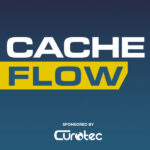In this episode, Stephen Blum, the Founder and CTO of PubNub, discusses their proprietary message bus connecting billions of devices, scaling challenges, and managing a world record-breaking event. They explore PubNub’s rapid product launch, customer feedback-driven development, and transition to automated scalability. The conversation also delves into the impact of WebSockets on communication, the current state of San Francisco, including remote work effects, homelessness, and tech scene dispersal, as well as the COVID-19 impact on cities like Seattle, San Francisco, and Philadelphia.
Stephen Blum is the Founder and CTO of PubNub, a trailblazing real-time communication infrastructure that powers telemedicine apps, online learning platforms, multiplayer gaming, on-demand delivery apps, and more. With over a decade of experience leading PubNub, he has driven the development of a highly reliable and fast Multi POP Realtime Data Stream Network. Stephen’s career journey showcases his expertise in real-time technology and innovation. Here are a few of the topics we’ll discuss on this episode of Cache Flow:
- PubNub also supports Atlassian products like Jira and Confluence, providing notifications for page updates.
- Building scalable tech requires careful consideration of memory usage and bug fixes to handle high concurrency.
- They re-architected and rewrote the message bus to create a globally distributed system, similar to a CDN.
- Many companies, including Twitter and LinkedIn, have embraced web sockets to power live-streaming and real-time communication features.
- San Francisco’s office buildings are mostly empty as remote work has become the new normal, leading to high vacancy rates.
- Tech workers are moving away from San Francisco to more affordable and remote-friendly locations like Lake Tahoe and Austin.
- The crime rates in cities like Philadelphia have risen, creating safety concerns for residents.
- 20:23 – “So if you build this wonderful thing over a year, it doesn’t matter because you have to throw a half of it. So that’s just launch as soon as possible. It, so before we jump to something else, this is the same thing. Even within an existing big business, when you’re launching a new product, you could spend one year, two years on a product and the product could maybe have been most likely fail, right? So instead of, you know, building this wonderful architecture and plan and all these tests and everything like that, don’t just, just get to market as quickly as possible. Start getting customers feedback. And then, because guess what? Day one, you’ll have zero customers, right? Launch day one, zero customers. Great. So now you’ve launched, you know, you can have some other team members work on getting customer feedback, attracting customers, getting people on board while you continue to build on the rest of what you or vision was.”
- 18:05 – “The year before push notifications became a thing, right? So there was like, well, no way to communicate with the device. No, like standardization when we just wanted to be able to provide an experience that allowed you to track a dot on the map, right? As maybe a taxi’s picking you up. Something simple like that. Or having multi-user collaboration on a page. And that was really hard. You could do it, it was really easy to do in a, in a room, right? You can have devices connect over your Wi-Fi or your LAN and communicate over a socket, but then you’d run into permissioning issues depending on what, you know, target platform you’re on, what the app is doing, or what the web browser is doing. There was no sort of uniform communication across all that. So we’re like, why don’t we make it super-duper easy and provide an API.”
- 12:18 – “I was kind of thinking from a business perspective, where it is a lot of fun to sort of imagine a business that you could sit back and to kind of take care of itself. And that’s a lot of where the inspiration of, you know, the, the freemium model and software as a service comes in specifically with PubNub.”
- 01:10 – “But when you have a lot of devices, the problem comes in uh oh, how are you going to do that with a single message bus? You can’t, you have to do a whole bunch of extra work. And so what we did was write our own proprietary message bus that was intended specifically to connect billions of devices, and we did it, we succeeded. It’s really cool. We’ve got lots of games connected to us. So multiplayer gaming, we make phones ring, which if you didn’t know that when your phone rings, you may have known, you might not know. That’s a signal that goes to the device and we send those signals.”
- 43:25 – “Reputation and the merits that you have along the way and what you achieve that becomes the, the currency. And I, you know, the ultimate question comes in like, “Hey, once you get to the Elon, Elon Musk level of wealth, what do you do?” Well, you can see what he’s doing now. Like he could just retire for the rest of his life, you know, for a million lives. He never has to work again. But you get to the point where, you know, you want to, you want to keep pushing forward, you want to keep pursuing. And it’s not about money anymore at that point.”





